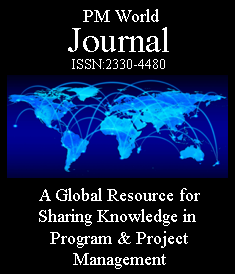Exploring rewilding as a
multi-project environment
SECOND EDITION
By Gavin W. Jones and David F. Murphy, PhD
Institute of Business, Industry and Leadership
University of Cumbria, UK
Abstract
Rewilding has gained growing prominence in recent years as an alternative to established environmental conservation and ecological restoration projects. Strategic rewilding interventions typically involve greater ambition over larger geographical areas, and embrace visionary time horizons, such as 100-years for Durrell’s Dalnacardoch Estate and 250-years for Trees for Life’s Dundreggan Estate, both in the Scottish Highlands. For initiatives with such mega-timescales, should we be using the word ‘project’ at all? Perhaps rewilding on this scale and ambition might be better considered as transformational endeavors.
Many rewilding projects do not have short-term fixed outcomes, and deliberately take an agile approach to realize success, enabling more adaptive, place-based collaboration with natural world stakeholders. What works in one location may not work in another due to ecological or climate differences, even at a very local level. Rewilding interventions, like other projects, require attention to context in design and delivery. This paper proposes that long duration rewilding interventions may be considered as portfolios of connected projects and operational activities working at landscape level in collaboration with nature.
Introduction
This conceptual article reflects on the theory and practice of rewilding and project management and poses questions about whether long-term rewilding projects are more akin to programs or portfolios. Three long duration rewilding interventions, referred to as projects, are contrasted with project management concepts – with the key research question being whether such interventions might be better described as multi-project interventions that are delivered under an umbrella of program or portfolio management.
Drawing upon secondary academic, practitioner and popular sources, the development of this paper is motivated by a wider research interest in how rewilding undertakings are justified and contributes to an evolving understanding of the development and implementation of rewilding projects.
What is Rewilding?
The idea of “wilderness is perceived in quite different ways, e.g., as a sphere of amorality, a sacred site or as a place of fear, of nature’s self-reassertion, of escape from rules and restrictions, or of relief from stressful daily life” (Kowarik, 2018, p. 339).
Differences in the perception of wilderness make it difficult for academics and practitioners to agree on a universal concept of rewilding. Over the past four decades rewilding has nonetheless emerged as alternative language for restoration, and as an alternative approach to conservation that champions the (re-)introduction of megafauna to restore ecosystem biodiversity (Root-Bernstein, Gooden and Boyes, 2018). A specific example is offered by Rackham (2006, p. 14) who refers to “wildwood” as “vegetation before it was affected by settled human activities.” Although rewilding is often explained in different ways, Carver et al. (2021, p. 1888) make the case for a unified definition:
The process of rebuilding, following major human disturbance, a natural ecosystem by restoring natural processes and the complete or near complete food web at all trophic levels as a self-sustaining and resilient ecosystem with biota that would have been present had the disturbance not occurred.
Carver et al. (2021) also argue that ecosystems are dynamic, so endurance does not suggest an unchanging environment. They present a “3Cs” model of “Cores, Corridors, and Carnivores” as dimensions of rewilding/rebuilding, noting also another set of three Cs – Climate resilience, Compassion and Coexistence (Carver et al., 2021, p. 1884). Alternatively, Corson et al. (2022, p. 1) suggest a simpler rewilding objective of increasing “the ability of ecological processes to act with little or no human intervention, and thus to enhance biodiversity and the supply of ecosystem services.”
Others suggest using “restoration” as an alternative (Hayward et al., 2019, p. 258). However, Root-Bernstein, Gooden and Boyes (2018) offer a different perspective:
More…
To read entire paper, click here
Editor’s note: Second Editions are previously published papers that have continued relevance in today’s project management world, or which were originally published in conference proceedings or in a language other than English. Original publication acknowledged; authors retain copyright. This paper is a revised version of a paper originally presented at the 11th Annual University of Maryland PM Symposium in April 2024. Jones, G. and Murphy, D. F. (2024) The paradox of rewilding projects: exploring rewilding as projects, programs or portfolios. It is published here with the permission of the authors and conference organizers.
How to cite this paper: Jones, G. W. and Murphy, D. F. (2025). Landscape Scale Rewilding Project Management: Exploring rewilding as a multi-project environment; PM World Journal, Vol. XIV, Issue I, January. Available online at https://pmworldlibrary.net/wp-content/uploads/2025/01/pmwj148-Jan2025-Jones-Murphy-landscape-scale-rewilding-project-management.pdf
About the Authors

Gavin Jones, LLM
University of Cumbria, England, UK
![]()
Gavin Jones is a Senior Lecturer in Project Management, Institute of Business, Industry and Leadership, University of Cumbria. He is also the Programme Leader for the Online Project Management degree. Gavin has a consulting industry background in systems projects, primarily in the financial services sector. More recently Gavin has worked with local government on place-based economic development and connecting businesses with government support schemes. He is passionate about the environment, working at a local level on his own rewilding project, planting trees on a field in the North Pennines National Landscape area in the north of England. Gavin is currently researching rewilding project justification towards a Doctor of Business Administration. He can be contacted at gavin.jones@cumbria.ac.uk

David F Murphy, PhD
University of Cumbria, England, UK
![]()
David F. Murphy is Associate Professor of Sustainability & Collaborative Leadership, Institute of Business, Industry and Leadership, University of Cumbria. He is also co-leading the university’s Doctor of Business Administration program.
David has extensive local-global experience of working on multi-stakeholder engagement and collaboration with senior leaders and change agents in business, government, universities, nongovernment organizations (NGOs), and the United Nations system, including related teaching, applied research and consultancy on partnerships for sustainable development and the local application of the UN Sustainable Development Goals (SDGs).
David is co-chair of the Zero Carbon Cumbria Partnership, which brings together diverse organizations to work towards the shared goal of carbon reduction. He can be contacted at david.murphy@cumbria.ac.uk.









